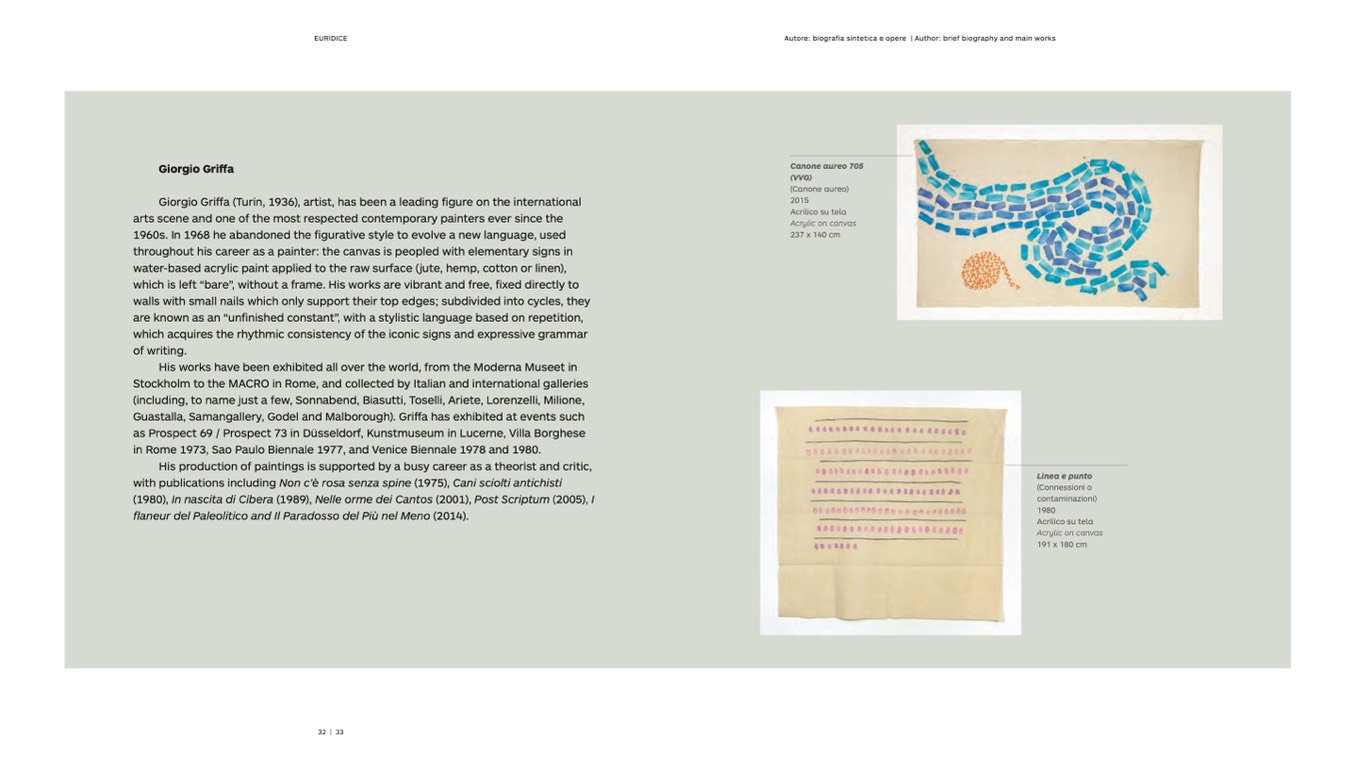
EURIDICE
Autore: biografia sintetica e opere | Author: brief biography and main works
Giorgio Griffa
Giorgio Griffa (Turin, 1936), artist, has been a leading figure on the international
arts scene and one of the most respected contemporary painters ever since the
1960s. In 1968 he abandoned the figurative style to evolve a new language, used
throughout his career as a painter: the canvas is peopled with elementary signs in
water-based acrylic paint applied to the raw surface (jute, hemp, cotton or linen),
which is left “bare”, without a frame. His works are vibrant and free, fixed directly to
walls with small nails which only support their top edges; subdivided into cycles, they
are known as an “unfinished constant”, with a stylistic language based on repetition,
which acquires the rhythmic consistency of the iconic signs and expressive grammar
of writing.
His works have been exhibited all over the world, from the Moderna Museet in
Stockholm to the MACRO in Rome, and collected by Italian and international galleries
(including, to name just a few, Sonnabend, Biasutti, Toselli, Ariete, Lorenzelli, Milione,
Guastalla, Samangallery, Godel and Malborough). Griffa has exhibited at events such
as Prospect 69 / Prospect 73 in Düsseldorf, Kunstmuseum in Lucerne, Villa Borghese
in Rome 1973, Sao Paulo Biennale 1977, and Venice Biennale 1978 and 1980.
His production of paintings is supported by a busy career as a theorist and critic,
with publications including Non c’è rosa senza spine (1975), Cani sciolti antichisti
(1980), In nascita di Cibera (1989), Nelle orme dei Cantos (2001), Post Scriptum (2005), I
flaneur del Paleolitico and Il Paradosso del Più nel Meno (2014).
Canone aureo 705
(VVG)
(Canone aureo)
2015
Acrilico su tela
Acrylic on canvas
237 x 140 cm
Linea e punto
(Connessioni o
contaminazioni)
1980
Acrilico su tela
Acrylic on canvas
191 x 180 cm
32 | 33

